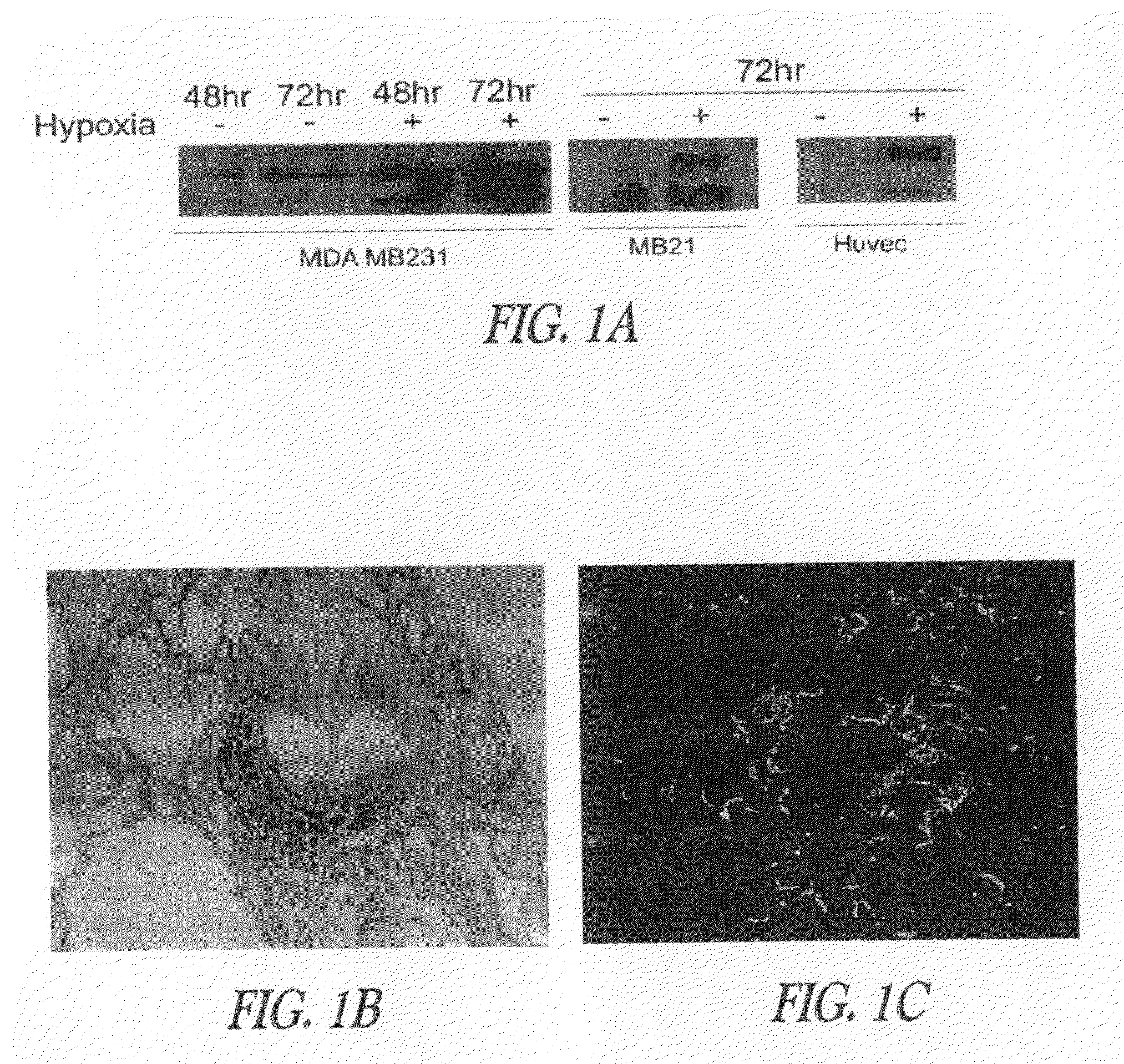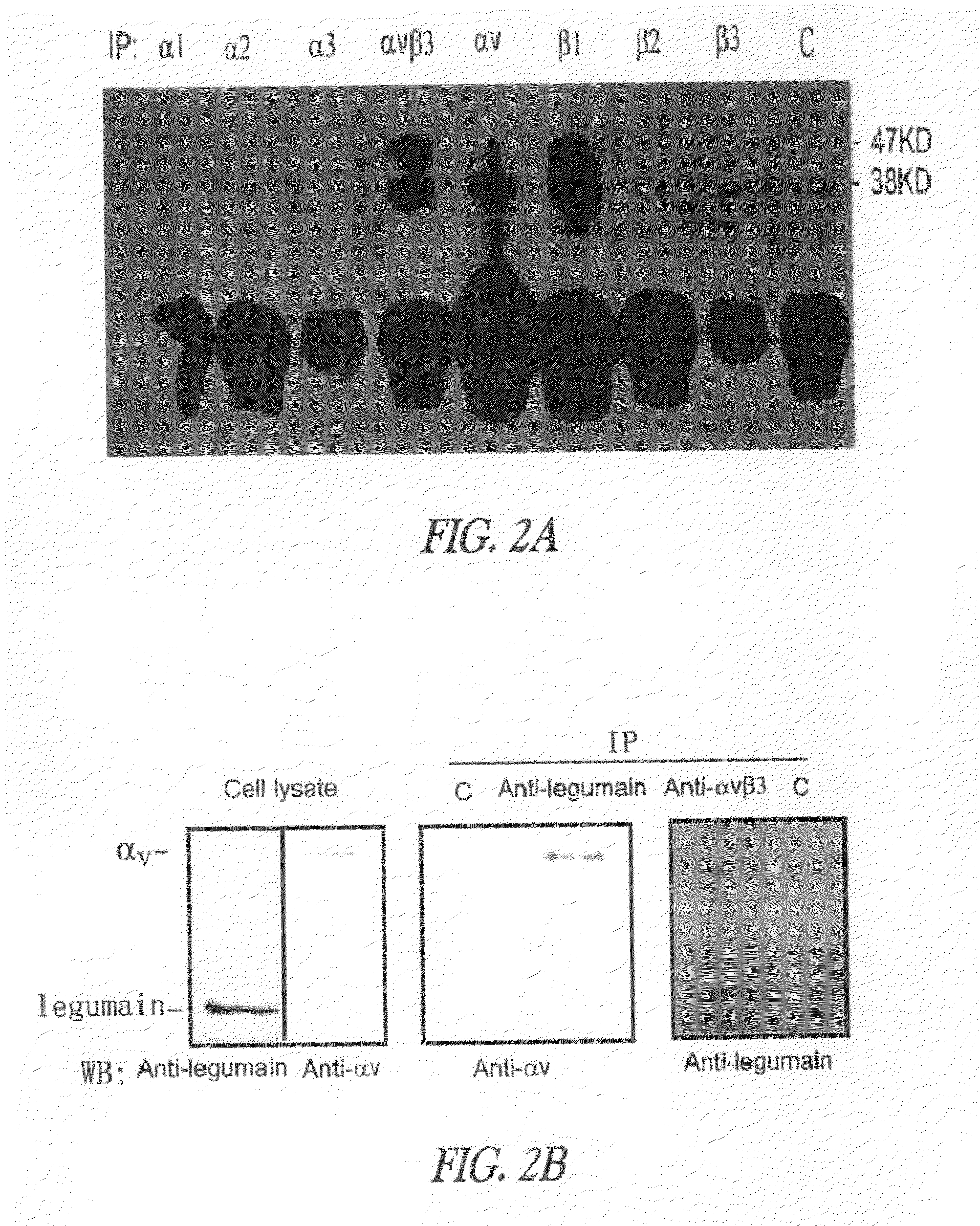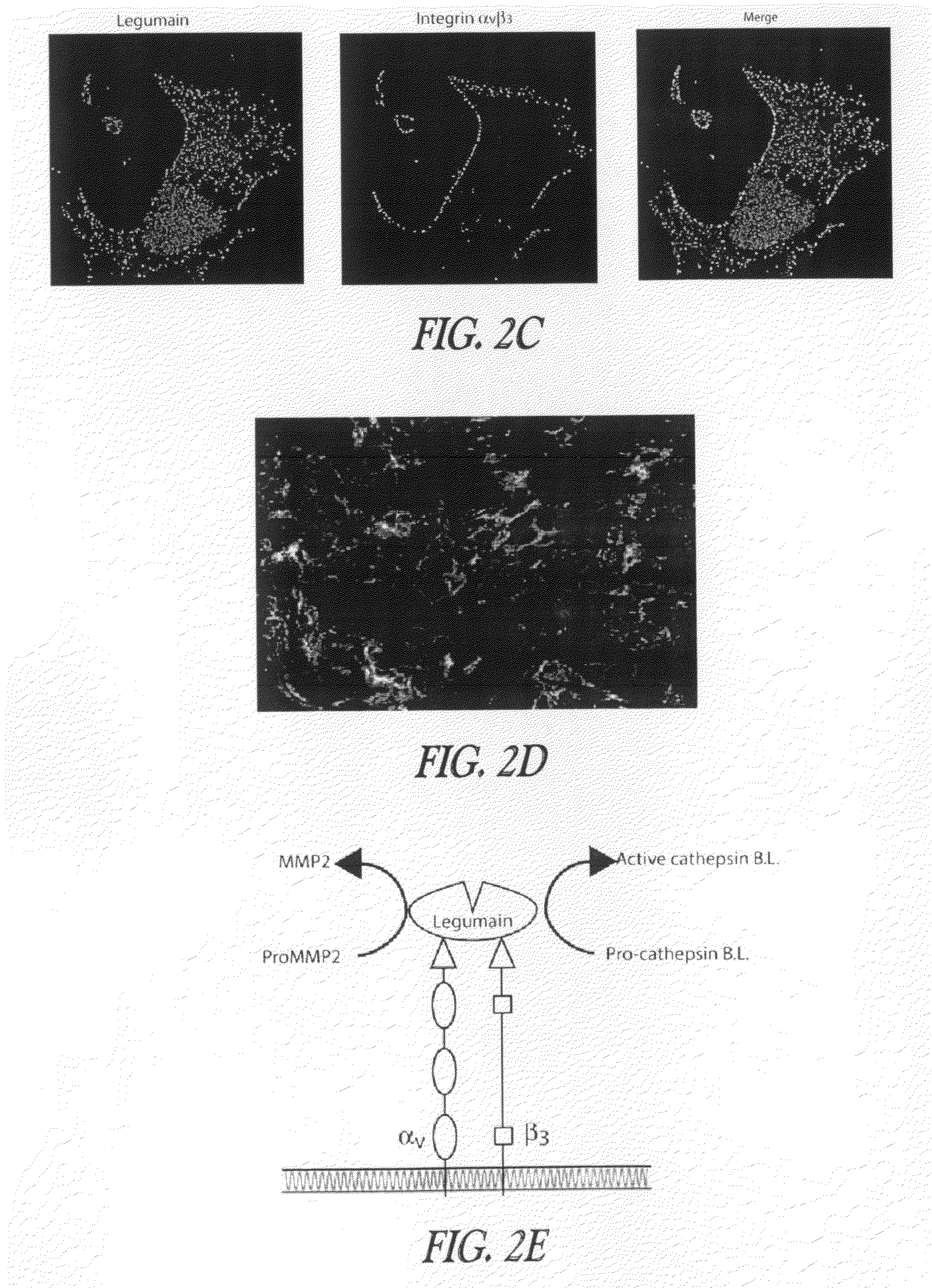Inhibiting tumor cell invasion, metastasis and angiogenesis
a tumor cell and metastasis technology, applied in the field of treating and/or inhibiting tumor cell invasion, metastasis and/or angiogenesis, can solve the problems of cancer mortality, serious side effects, and cancer is an enormous problem, and achieve the effects of reducing toxicity, abolishing cytotoxic activity, and high expression level
- Summary
- Abstract
- Description
- Claims
- Application Information
AI Technical Summary
Benefits of technology
Problems solved by technology
Method used
Image
Examples
example 1
Legumain is Expressed in Tumors
[0373]Example 1 demonstrates that legumain is over-expressed in human tumors.
Materials and Methods
[0374]Reagents and cell lines. Rabbit polyclonal antisera against human legumain, as well as 293 cells stably expressing human legumain, were kindly provided by Dr. D. Roodman (Department of Medicine and Hematology, University of Texas Health Science Center, San Antonio, Tex.). A legumain substrate peptide was synthesized by and purchased from Bachem (King of Prussia, Pa.). Doxorubicin was purchased from Sigma (St. Louis, Mo.). Costar migration chambers were obtained from Corning Incorporated (Corning, N.Y.). Vitrogen was obtained from Cohesion Technologies (Palo Alto, Calif.). Mouse monoclonal antibody specific for human integrin β1 was obtained from Dr. R. Klemke (The Scripps Research Institute). The DMEM media was obtained from Invitrogen (Carlsbad, Calif.). The CT26 murine colon carcinoma cell line, the C1300 mouse neuroblastoma cell line anf human HT1...
example 2
Legumain and Cell Migration, Tumor Invasion, and Metastasis
[0388]Example 2 discloses that legumain promotes cell migration and over-expression and is associated with enhanced tissue invasion and metastasis.
Materials and Methods
[0389]Cell invasion and mobility assays. Cell migration and invasion assays were performed as described with modifications (Albini et al., 1987). Stock solutions (15 mg / ml) of Matrigel basement membrane matrix (Becton Dickinson, Bedford, Mass.) were stored at −80° C. in 100 μl aliquots. After thawing on ice, the stock was diluted 1:50 with cold serum-free culture media and immediately applied to each membrane insert (8 μm pore) that formed the upper chambers of the multi-well invasion assay plate. The Matrigel was incubated overnight in a sterile laminar tissue culture hood. The membranes were hydrated for 2 hours with 250 μl of serum-free medium and excess medium was removed by aspiration. Medium containing 10% FBS was added to the bottom of each well. A susp...
example 3
Tumoricidal Effects of a Prodrug
[0408]Legumain's unique functional properties and high level of expression in a wide range of human tumors makes it a potential candidate target for enzymatic activation of a prodrug that can help eradicate tumors.
[0409]The integrity of the amino group of doxorubicin is essential for function. It has been shown that doxorubicin tolerates the addition of a leucine residue at this site. However incorporation of additional amino acids abolishes cytotoxic activity (de Jong et al., 1992; Denmeade et al., 1998).
[0410]In this Example, a prototype prodrug was synthesized by addition of an asparaginyl endopeptidase substrate peptide to doxorubicin. Upon exposure to legumain, the agent was converted to an active cytotoxic leucine-doxorubicin molecule. The prodrug had markedly reduced toxicity compared to doxorubicin, but it was effectively tumoricidal in a murine colon carcinoma model where it was presumably cleaved to form the leucine-doxorubicin cytotoxin. Th...
PUM
| Property | Measurement | Unit |
|---|---|---|
| temperature | aaaaa | aaaaa |
| temperatures | aaaaa | aaaaa |
| temperatures | aaaaa | aaaaa |
Abstract
Description
Claims
Application Information
 Login to View More
Login to View More - R&D
- Intellectual Property
- Life Sciences
- Materials
- Tech Scout
- Unparalleled Data Quality
- Higher Quality Content
- 60% Fewer Hallucinations
Browse by: Latest US Patents, China's latest patents, Technical Efficacy Thesaurus, Application Domain, Technology Topic, Popular Technical Reports.
© 2025 PatSnap. All rights reserved.Legal|Privacy policy|Modern Slavery Act Transparency Statement|Sitemap|About US| Contact US: help@patsnap.com



